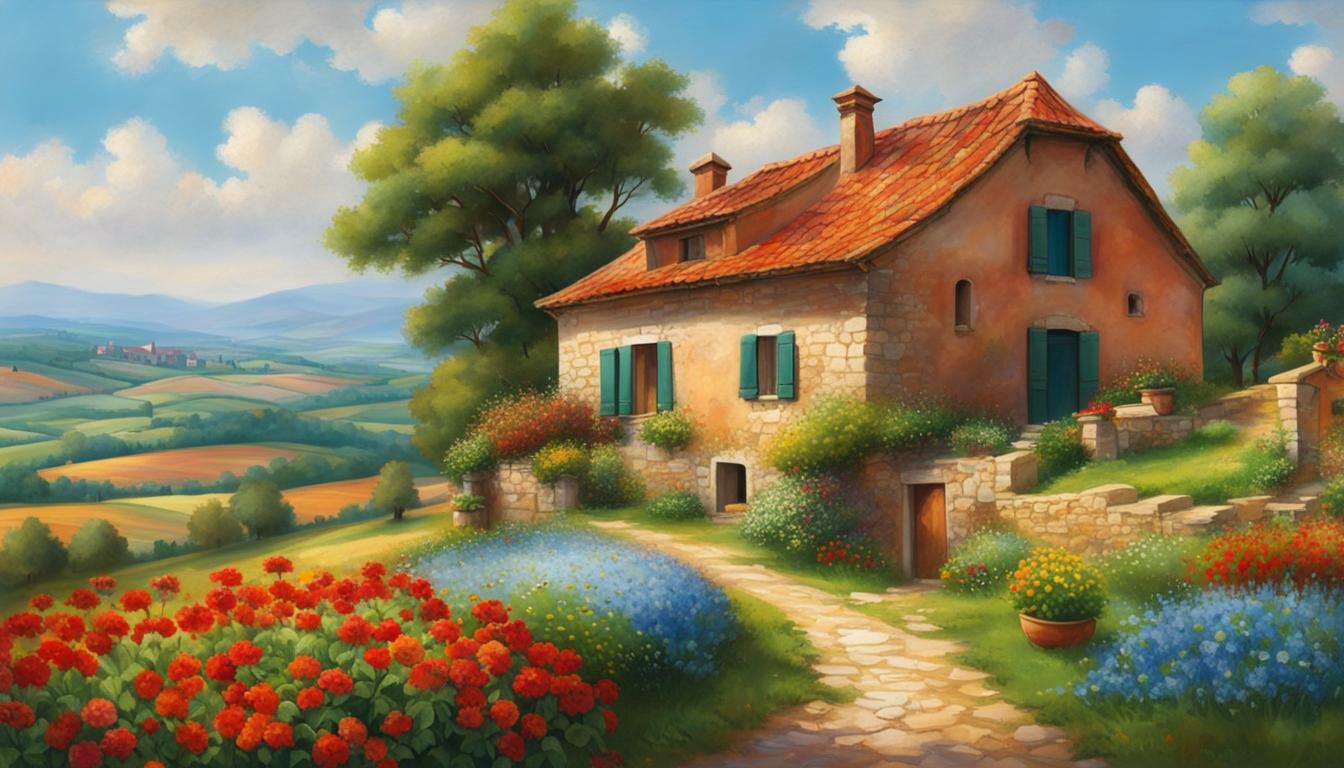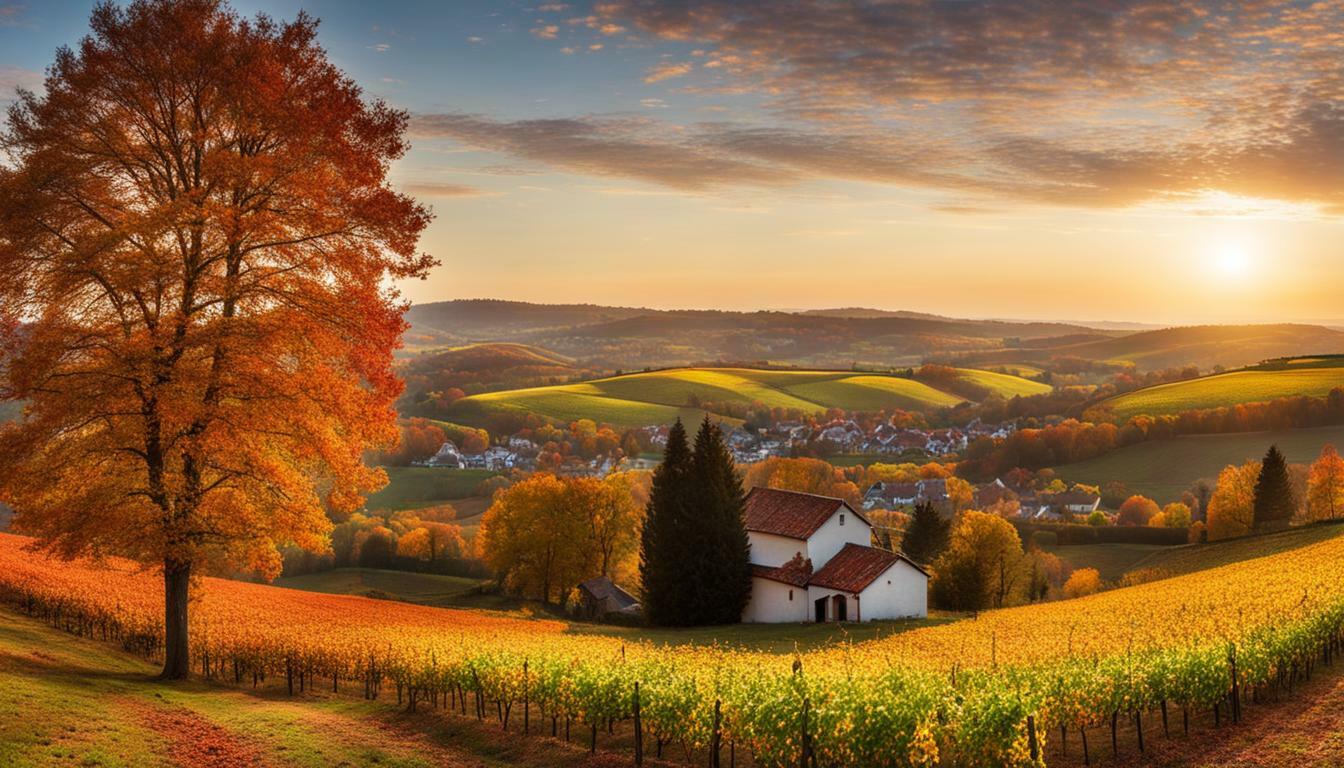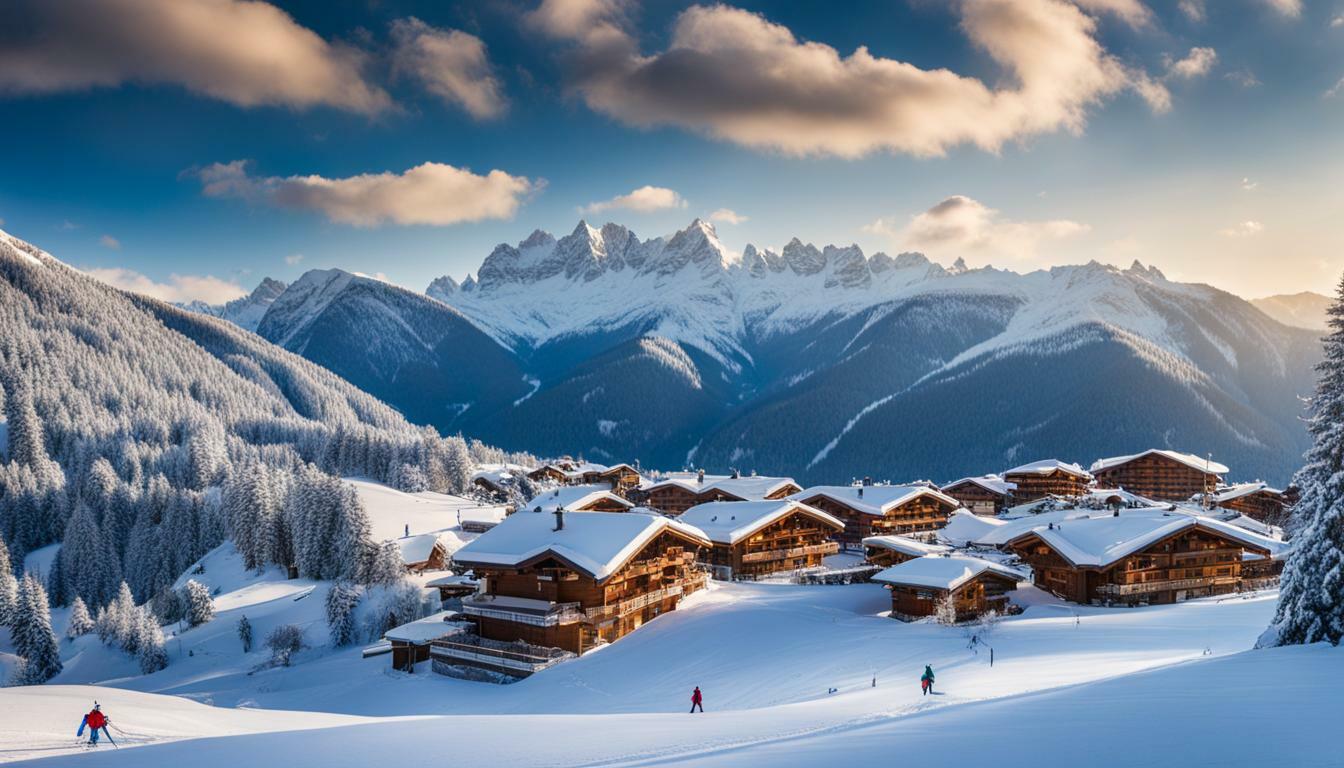Deciding when to visit Italy is crucial for experiencing the country’s diverse beauty and cultural offerings at their finest. With its varied climate and weather patterns, Italy undergoes a yearly cycle of change, each season offering its own unique charm and attractions.
During the spring months of April to June, Italy comes alive with blooming landscapes and mild weather. The pleasant temperatures make it an ideal time for outdoor exploration, while tourism flows are still manageable. Nature awakens in full bloom, creating a picturesque backdrop for your adventures. Additionally, rural areas offer cheaper prices, and museums are less crowded on weekdays, allowing for a more intimate cultural experience.
As summer arrives in July and August, coastal areas become bustling with tourists, making it the peak tourist season. While the beaches are a popular attraction, it’s important to note that prices tend to be higher during this time, and some areas may feel overcrowded. However, if you enjoy the vibrant atmosphere and lively beach scenes, summer in Italy can be an unforgettable experience.
In the fall season from September to November, Italy celebrates its harvest season with an abundance of wine, olive oil, and truffles. Food festivals take place throughout the country, showcasing the best of Italian cuisine. The countryside transforms into a golden hue, providing a picturesque backdrop for exploration. This is a great time to immerse yourself in the local traditions and indulge in the flavorful delights of Italian gastronomy.
During the winter months of December to March, Italy offers a unique experience with snow sports in the Alps, Christmas markets, and festive celebrations in cities. This is considered the off-peak season, meaning you can enjoy good deals and fewer crowds. Whether you’re hitting the slopes or wandering through the enchanting Christmas markets, winter in Italy holds its own special charm.
It’s important to consider local holidays and their impact on travel plans. Certain regions may experience higher tourism flows during specific holidays, which can affect hotel availability and prices. It’s always advisable to plan ahead and check for any major holidays or events that may coincide with your visit.
Key Takeaways:
- Spring (April to June) offers pleasant weather, blooming landscapes, and fewer crowds.
- Summer (July and August) is the peak tourist season with crowded coastal areas and higher prices.
- Fall (September to November) showcases the harvest season, food festivals, and golden countryside.
- Winter (December to March) presents opportunities for snow sports, Christmas markets, and off-peak deals.
- Consider local holidays and their impact on travel plans for an optimal experience.
Spring: Blooming Landscapes and Mild Weather
Spring, from April to June, is widely considered the best time to visit Italy, offering mild weather, vibrant nature, and fewer tourists compared to the summer months. As the temperatures begin to rise, Italy’s landscapes burst into a riot of color, with blooming flowers and lush greenery embracing the countryside.
During spring, the weather in Italy is pleasant, making it ideal for outdoor activities and exploration. Whether you’re strolling through picturesque towns or hiking in the countryside, the mild temperatures create an enjoyable atmosphere for tourists. It is the perfect time to embark on a scenic road trip, witnessing the beauty of Italy’s diverse regions.
One of the advantages of visiting Italy in spring is the lower prices, especially in rural areas. As the tourist flows are not as high as during the summer months, accommodations, dining, and activities tend to be more affordable. This presents a wonderful opportunity to immerse yourself in Italian culture, venture off the beaten path, and experience the local way of life.
If you’re a museum lover, visiting Italy in spring offers the advantage of exploring these cultural gems without the crowds. Weekdays are particularly quieter, allowing you to fully appreciate the art and history on display. Take your time admiring masterpieces in iconic museums like the Uffizi Gallery in Florence or the Vatican Museums in Rome.

Summer: Bustling Coastal Areas and Peak Tourism Season
Italy’s summer months of July and August attract a large influx of tourists, turning the coastal areas into bustling hubs and leading to higher prices across the country. Travelers flock to popular destinations such as the Amalfi Coast, Cinque Terre, and Sicily to soak up the sun and enjoy the stunning beaches. The lively atmosphere and vibrant energy make it an exciting time to visit, but it’s important to be prepared for the crowds and increased expenses.
With the peak tourist season in full swing, it’s advisable to book accommodations and activities well in advance to secure the best options and avoid disappointment. Coastal areas can become quite crowded, so be prepared for longer queues and busy streets. However, if you’re someone who enjoys the lively ambiance and thrives in crowded environments, the summer months can offer a unique and vibrant experience.
While the coastal areas may be busy, there are still hidden gems and lesser-known spots to explore. Consider venturing off the beaten path and explore smaller coastal towns or islands that offer a more relaxed and authentic experience. These quieter destinations often provide a respite from the crowds and a chance to enjoy the natural beauty of Italy’s coastline without the hustle and bustle.
“The Italian summer is a time of celebration, with lively festivals, outdoor concerts, and vibrant street markets taking place throughout the country. It’s a chance to immerse yourself in the rich culture and soak up the joyous atmosphere,” says travel expert, Chelsea Exton from Travel + Leisure.
As with any peak tourist season, prices tend to be higher during the summer months. Accommodations, flights, and even attractions may have inflated prices compared to other times of the year. However, there are ways to mitigate these costs by planning ahead, opting for less popular destinations, or considering alternative accommodation options such as vacation rentals or agriturismos.
To make the most of your summer visit to Italy, be prepared for the crowds, embrace the lively atmosphere, and take advantage of the stunning coastal scenery. Whether you choose to relax on the beaches of the Amalfi Coast or explore the picturesque villages of Cinque Terre, Italy’s coastal areas in the summer are a true delight for sun-seekers and adventure enthusiasts alike.
| Pros | Cons |
|---|---|
| Stunning beaches and coastal scenery | Higher prices |
| Lively atmosphere and vibrant energy | Crowded coastal areas |
| Opportunity to attend lively festivals and events | Longer queues and busy streets |
| Ample opportunities for water sports and outdoor activities | Popular tourist destinations may be overcrowded |
Fall: Harvest Season and Golden Countryside
From September to November, Italy embraces the fall season, offering a delightful blend of wine, olive oil, truffles, and vibrant food festivals, all set against a backdrop of a golden countryside. As the temperatures begin to cool down, the vineyards and olive groves come alive, presenting visitors with the opportunity to witness the magic of the harvest process.
One of the highlights of the fall season in Italy is the abundance of food festivals that celebrate the country’s gastronomic treasures. From truffle festivals in Alba to wine festivals in Tuscany, these events allow travelers to indulge in the flavors and aromas of the season. It’s a chance to taste the freshest produce, experience traditional cooking techniques, and immerse yourself in the rich culinary heritage of Italy.
“Italy is a country that takes pride in its food culture, and the fall season is a testament to that. The countryside transforms into a golden paradise, offering breathtaking vistas and a peaceful atmosphere. It’s the perfect time to savor the local delicacies, explore charming rural areas, and witness centuries-old traditions.”
For those seeking a more immersive experience, the fall season provides an opportunity to participate in the harvest activities. Many vineyards and olive farms offer hands-on experiences where visitors can pick grapes and olives, and even learn the art of winemaking and olive oil production. It’s a chance to connect with the land, learn about traditional farming practices, and gain a deeper appreciation for the hard work that goes into producing these culinary delights.

As the fall season comes to an end, Italy starts to prepare for the winter months. The countryside gradually transitions from golden hues to a serene winter landscape, offering a completely different charm. With lower prices and fewer crowds, it’s an ideal time to explore Italy’s cities, indulge in snow sports in the Alps, and immerse yourself in the festive atmosphere of Christmas markets.
Whether you’re a food lover, a nature enthusiast, or simply looking for an authentic cultural experience, fall in Italy offers a unique blend of flavors, landscapes, and traditions. It’s a season that truly captures the essence of Italian life and leaves visitors with unforgettable memories.
Winter, from December to March, unveils a different side of Italy, offering opportunities for snow sports, enchanting Christmas celebrations, and the advantage of lower prices during the off-season. If you’re a fan of winter sports, the breathtaking Alps are the perfect destination. With pristine slopes and world-class ski resorts, Italy offers endless opportunities for skiing, snowboarding, and other snow activities. The majestic beauty of the mountains combined with the adrenaline rush of winter sports creates an unforgettable experience for all winter enthusiasts. Whether you’re a beginner or an experienced athlete, there’s something for everyone in the snowy peaks of the Alps.
One of the highlights of winter in Italy is the enchanting Christmas celebrations. Cities come alive with festive decorations, dazzling lights, and charming Christmas markets. Stroll through the bustling streets of Rome, Milan, or Florence, and immerse yourself in the magical atmosphere. Explore the charming stalls, where you can find unique gifts, traditional crafts, and mouthwatering treats. Indulge in the rich Italian holiday traditions and be captivated by the warmth and joy that fills the air during this special time of year.
Another advantage of visiting Italy during winter is the off-season deals. With lower prices and fewer crowds, you can enjoy a more intimate and authentic experience. Take advantage of discounted rates on accommodations, flights, and attractions, allowing you to explore Italy’s iconic landmarks and hidden gems at a fraction of the cost. Whether you’re wandering through ancient ruins, admiring Renaissance art, or savoring the delectable cuisine, you’ll have the opportunity to immerse yourself in the culture and history of Italy without the usual hustle and bustle of peak tourist season.
To get the most out of your winter trip to Italy, it’s important to consider local holidays and their impact on travel plans. Carnival season in February and March can be crowded in Venice, so plan accordingly if you wish to experience this lively and colorful event. Tuscany can be crowded in the summer and autumn, making winter and spring the ideal seasons to visit. By planning your itinerary around local holidays and events, you can make the most of your time in Italy and create memories that will last a lifetime.
So, if you’re looking for a different perspective on Italy, embrace the magic of winter. Experience the thrill of snow sports, marvel at the enchanting Christmas celebrations, and take advantage of the off-season deals. Whether you’re seeking adventure on the slopes or immersing yourself in holiday cheer, Italy in winter is sure to leave you with unforgettable memories.

Conclusion
Choosing the best time to visit Italy depends on personal preferences, but understanding the characteristics of each season can greatly enhance your travel experience in this captivating country.
During the spring months of April to June, Italy comes alive with blooming landscapes and mild weather. The pleasant climate makes it an ideal time to explore the countryside, as prices are cheaper in rural areas and there are fewer crowds in museums on weekdays.
However, if you’re looking for bustling coastal areas and peak tourism, the summer months of July and August are the perfect time to visit. Just be prepared for crowded beaches and higher prices in popular tourist destinations.
For a taste of Italy’s rich culinary traditions, visit during the fall season from September to November. This is the harvest season, where you can indulge in wine, olive oil, and truffles. Food festivals take place throughout the country, and the countryside transforms into a golden hue.
If you’re a fan of snow sports or want to experience the magic of Christmas in Italy, winter from December to March offers great deals and unique festivities. Enjoy skiing in the Alps, explore Christmas markets, and take part in the vibrant celebrations in the cities.
It’s important to note that beach towns may not be as lively during the winter months, and major holidays can impact your travel plans. Additionally, local holidays, such as the crowded Carnival season in Venice or the busy periods in Tuscany, should be taken into consideration when planning your trip.
By considering the seasonal variations and understanding the pros and cons of each time of year, you can make the most of your visit to Italy and create unforgettable memories in this enchanting destination.
FAQ
Q: What is the best time to visit Italy?
A: The best time to visit Italy is during the spring months of April to June when the weather is pleasant and the tourism flows are bearable.
Q: What are the advantages of visiting Italy during the spring?
A: Visiting Italy during the spring allows you to witness nature blooming, enjoy cheaper prices in rural areas, and experience fewer crowds in museums on weekdays.
Q: Is summer a good time to visit Italy?
A: Summer is the peak tourist season in Italy, with crowded coastal areas and higher prices. However, it is still a popular time to visit for those who enjoy the bustling atmosphere.
Q: What can I expect during the fall season in Italy?
A: The fall season in Italy is a time of harvest, with wine, olive oil, and truffles being celebrated. You can also enjoy food festivals and witness the countryside turning golden.
Q: Are there any unique experiences in Italy during the winter months?
A: During winter, you can enjoy snow sports in the Alps, explore Christmas markets, and experience off-peak deals with lower prices and fewer crowds.
Q: Should I consider local holidays when planning my trip to Italy?
A: Yes, it is important to consider local holidays as they can affect travel plans. Be aware of the impact they may have on crowds and availability of services during your visit.



